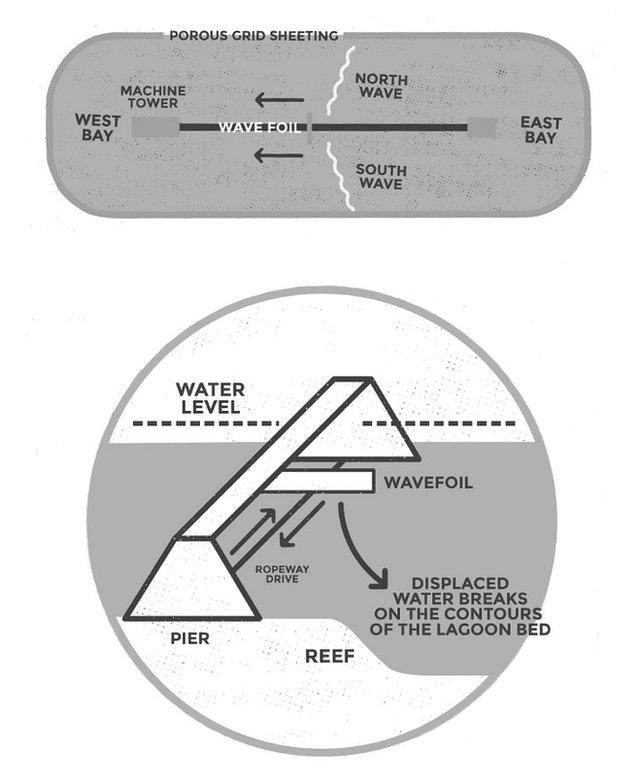Wales surf wave generator starts up
- Published

The first waves have peeled across an artificial surf lagoon built on the site of an old aluminium works on the edge of the Snowdonia National Park.
The inland lake covers an area the size of six football pitches, and the site cost £15m to build.
The owners of Surf Snowdonia claim to have created the longest man-made surf wave in the world.
The lozenge-shaped lagoon now dominating the Conwy valley is 300m long and 110m wide.
That's roughly the size of six football pitches.
It holds more than six million gallons (33,000 cu m) of filtered rainwater that is piped down from mountain reservoirs.
A snowplough-shaped underwater foil positioned under a pier running the length of the lake is designed to generate breakers reaching up to a hefty 6ft (2m).
It "barrels", which means it is fast and large enough to create a kind of mini "tube", which is what experienced surfers want. Surf Snowdonia says it will create up to 50 waves per hour.

It is also consistent, breaking in the same place every time. This could tempt beginners into the water along with helping pro-surfers perfect complex moves.
This kind of technology with its guarantee of waves could also help surfing to eventually become an Olympic sport.
Entrepreneur Andy Ainscough, director of Surf Snowdonia, calls it "surfing for softies", with heated changing rooms and hot showers nearby. "The hardest bit about surfing is that first learning stage. This fast-forwards this. I'm confident that our instructors could get anyone up," he said.
The wave itself was designed by Wavegarden, a company run by a group of engineers from northern Spain who are surfers. It took more than a decade to develop, and this is the first time that the technology has been used anywhere in the world.
The funding and logistics for the site in north Wales were organised at breakneck speed by Mr Ainscough, working alongside former Army colonel and managing director Steve Davies. The project received around £4m in loans and grants from the Welsh government.
Mr Davies spent more than 30 years in the Army. "The building and development of the former factory site was probably the biggest challenge because a century of contamination beneath the ground took a hell of a lot of work to decontaminate," he said.
Eighteen tanker-loads of heavy metals and hydrocarbons were removed, and 25,000 cu m of rubble from the old foundations were crushed and reused.
Commercial secret
Despite the size and complexity of the project, it was completed in a year.
"Beneath the waves is the most closely guarded commercial secret of this project - the wavefoil," said Mr Davies.
"However, in effect it looks to the naked eye like a couple of snowploughs bolted together… but in combination with the speed and the depth of water, they are shaped to create the waves that every surfer wants."
Four-times Welsh surf champion Jo Dennison was recruited to work as a coach.
"I think it's going to shape the future of surfing. You can't compare it with surfing in the ocean, it's definitely a special thing to be in the water with nature, but this is a fantastic training facility."
There have been several setbacks including a fire in April, however the project has been completed on time.
A rival project in Bristol has decided to change the type of system it will use to generate its wave. It says the WaveLoch SurfPool technology will offer more waves per hour, and "has no moving parts in the water with the surfers, important for safety and maintenance".
Scottish company Murphys Waves uses a different system to generate what it claims are the "largest man-made waves in the world", up to 3.3m (12ft) high at a man-made site in Tenerife.
Surf Snowdonia's site is remote but the company stresses that more than seven million people - mainly in Liverpool and Manchester - live within two hours' drive.
There are good beach surf spots fairly near on the Llyn Peninsula. The question is whether surfers would rather spend time in the ocean or in a wave theme park.
Follow Claire on Twitter, external.